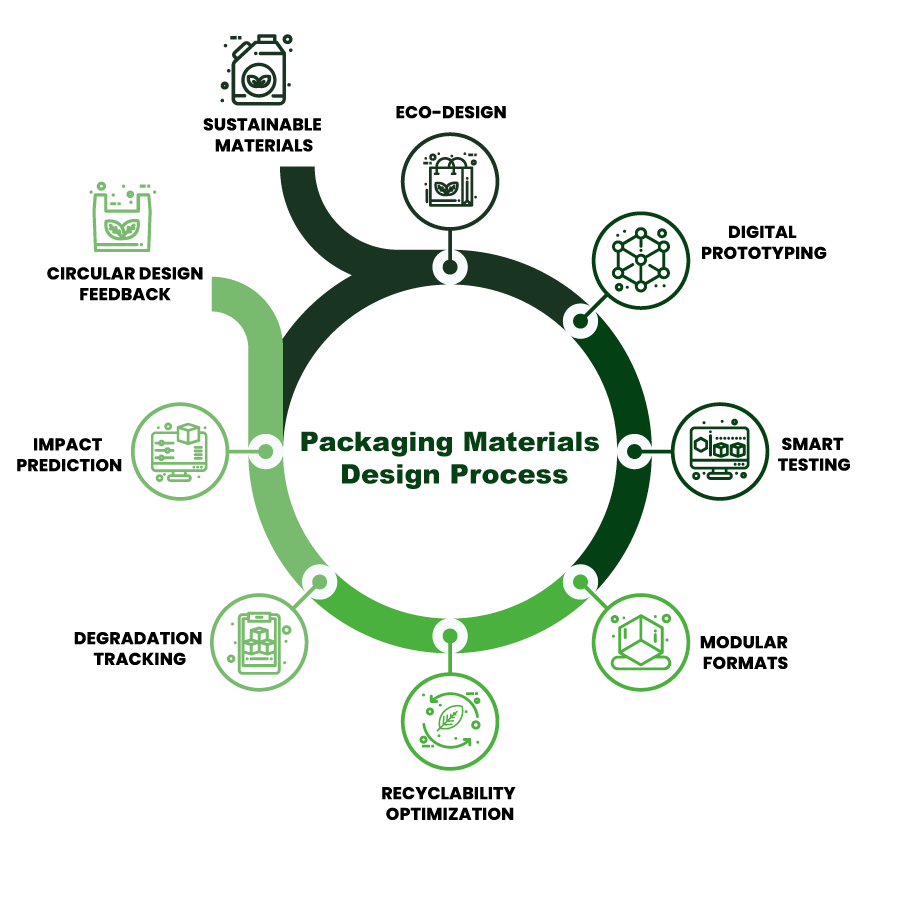Project
BioPackMan is focused on designing next-generation biodegradable polymer materials (BDPM) to create high-performance, eco-friendly packaging solutions. By exploring an extended range of biopolymers — including Polyhydroxyalkanoates (PHAs), Poly(butylene succinate) and its copolymers (PBS, PBSA), and Polylactic Acid (PLA) — the project develops custom material blends with improved mechanical strength, thermal stability, chemical resistance, and gas barrier properties.
Objectives
Sustainable Bio-Polymers
Development of competitive and sustainable bio-degradable polymers and blends
Smart Bio-Additives
Sustainable additives for functional performance and tuneable biodegradability
Digital Bio-Design
End-to-end digital toolset to accelerate the design and virtual screening of biodegradable compounds
NextGen Biopackaging
Biodegradable high-performance packaging intermediates
Approach & Innovation
We develop new bio-based and biodegradable plastic materials using renewable feedstocks such as PLA (polylactic acid) and PHAs.
By combining them with natural additives and applying chemical recycling strategies, we create customized packaging formats — both rigid and flexible — suitable for food and personal care sectors.

The problem we are solving
Many packaging solutions today labelled as “biodegradable” or “eco” are difficult to recycle, poorly labelled, and often degrade only under industrial conditions. if at all. This creates confusion, wasted resources, and even contributes to pollution when materials degrade improperly
- Packaging producers – with scalable, high-performance solutions
- Brands & retailers – with sustainable, certifiable alternatives
- Researchers & SMEs – with open-access tools and validation
- Consumers & citizens – with safer, clearer, circular choices
- Reduce CO₂ emissions by up to 50–75% compared to fossil-based packaging
- Strengthen EU market leadership in biodegradable packaging
- Create new eco-jobs in materials science, recycling, and digital manufacturing
- Advance European Green Deal, Circular Economy Action Plan, and Fit for 55 targets